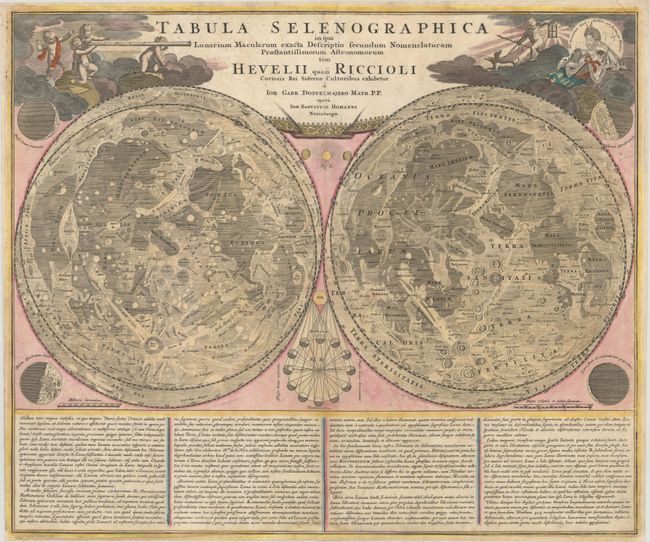Catalog Archive
Auction 177, Lot 35
"Tabula Selenographica in qua Lunarium Macularum Exacta Descriptio Secundum Nomenclaturam Praestantissimorum Astronomorum tam Hevelii quam Riccioli...", Doppelmayr/Homann

Subject: Moon
Period: 1742 (circa)
Publication: Atlas Coelestis
Color: Hand Color
Size:
22.9 x 19.2 inches
58.2 x 48.8 cm
Download High Resolution Image
(or just click on image to launch the Zoom viewer)
(or just click on image to launch the Zoom viewer)

